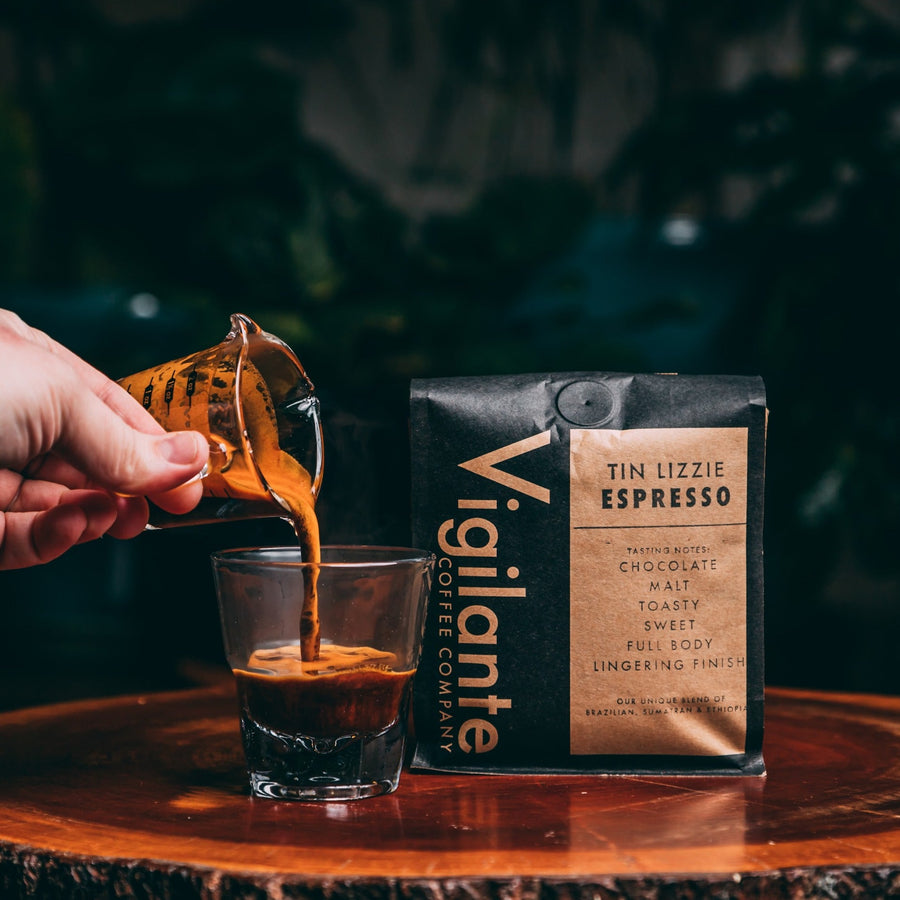SOE Single Origin Espresso – The Go-To Choice for Espresso Lovers
SOE Single Origin Espresso – The Go-To Choice for Espresso Lovers
Blog Article
Coffee Beans 101: Every Little Thing You Required to Know Regarding Coffee and Blended Coffee Beans
When it involves coffee, understanding the subtleties of coffee and mixed beans can change your daily cup. You'll uncover the distinct qualities of Arabica and Robusta beans, and exactly how each effects flavor and caffeine content. From the expanding procedure to roasting techniques, every step contributes in your coffee experience. So, what makes the best mixture? Let's explore the essential elements that add to a phenomenal mug of coffee.
Recognizing Coffee Beans: Types and Varieties
When diving right into the globe of coffee, comprehending the kinds and selections of coffee beans is essential for every lover. Arabica beans are known for their smooth, intricate tastes and reduced caffeine web content, making them a favorite among coffee aficionados.
Within these varieties, you'll locate numerous regional ranges, each bringing unique features. As an example, Ethiopian Yirgacheffe provides brilliant flower notes, while Colombian beans supply a healthy flavor account. As you explore, keep in mind to focus on processing techniques like washed or natural, as they can considerably affect the final preference. By familiarizing on your own with these beans and their flavors, you'll elevate your coffee experience and make even more informed options in your developing journey.
The Expanding Process: From Seed to Bean
When you explore the journey of coffee, everything begins with seed choice techniques that set the foundation for quality. From there, farming and collecting play essential duties in guaranteeing the beans thrive. Handling approaches transform those collected cherries into the coffee beans you love.
Seed Choice Methods
Choosing the appropriate seeds is vital for producing high-grade coffee beans, as it lays the structure for the whole growing procedure. You need to begin by selecting seeds from respectable sources that focus on quality and genetic variety. Seek selections recognized to prosper in your specific environment and soil problems. Focus on the seed's age and storage space problems, as fresh seeds often tend to germinate far better. When possible, choose natural seeds to decrease exposure to damaging chemicals. Consider the condition resistance of different ranges, as this can substantially influence your yield. Don't hesitate to seek advice from with regional farmers or specialists to acquire insights right into the ideal seed choices for your region. This understanding will certainly enhance your coffee-growing experience.
Cultivation and Harvesting
As you support your coffee seeds into prospering plants, understanding the cultivation and harvesting process is crucial for achieving the ideal flavor and high quality. Begin by growing your seeds in well-draining soil, preferably in a shaded area to secure them from straight sunlight.
Hand-picking is often the ideal method to ensure only the ripest cherries are selected. Timing is crucial; gathering as well late or too very early can influence the flavor account of your beans.

Handling Techniques Clarified
When you have actually collected your coffee cherries, the next essential action is processing them to change those dynamic fruits into the beans you'll make. There are two main approaches: the wet process and the dry procedure. In the completely dry procedure, you spread out the cherries out in the sun to completely dry, enabling the fruit to ferment and pass on special flavors to the beans. On the various other hand, the wet process includes eliminating the fruit instantly and fermenting the beans in water, leading to a cleaner preference. After handling, the beans are hulled, arranged, and usually dried once again. Each approach impacts the flavor profile, so trying out both can help you discover your favorite brew. Understanding these methods is key to enjoying your coffee experience.
Roasting Techniques: Exactly How Taste Is Created
When it concerns toasting coffee beans, understanding roast levels is crucial to exposing their distinct tastes. Each roasting strategy impacts the fragrance and boosts the taste advancement process, providing you a richer coffee experience. Let's explore how these elements integrated to boost your everyday brew.
Roast Degrees Clarified
Roast degrees play an essential function in forming the taste account of your coffee. By comprehending these degrees, you can better select a coffee that matches your preference preferences. Experiment with different roasts to discover which one resonates with you, improving your total coffee experience and enjoyment.
Influence On Fragrance
The roast level not just affects the preference of your coffee however likewise greatly affects its fragrance. When you select a light roast, you'll typically see intense, floral notes that can make your coffee smell dynamic and fresh. As the beans darken, the aroma shifts; a tool roast brings out extra balanced, caramelized fragrances, while a dark roast tends to feature vibrant, great smoky touches. Each roasting technique launches various unstable compounds, shaping just how your coffee scents. In addition, the quality of the beans plays an important function; newly roasted coffee launches more fragrant oils, enhancing that enticing fragrance. So, take note of the roast level-- it's essential to revealing the full aromatic experience of your mixture.
Taste Advancement Process
As you discover the flavor growth process, you'll discover that toasting techniques play a critical duty fit the taste profile of your coffee. The roasting temperature and time straight affect the acidity, sweet taste, and resentment of the beans. Light roasts retain even more of the bean's original flavors, highlighting fruity and flower notes. Medium roasts equilibrium acidity and body, providing a well-rounded flavor. Dark roasts, on the other hand, draw out bold, great smoky attributes while reducing the bean's inherent top qualities. Throughout toasting, chemical responses, like the Maillard reaction and caramelization, change the beans and improve their intricacy. Try out different roasting degrees can help you locate your best mixture, so don't think twice to taste and discover the abundant range of tastes!
Coffee vs. Blended Coffee: Secret Distinctions
Coffee and combined coffee each deal distinct experiences that satisfy different tastes and preferences. Espresso is a concentrated coffee brewed forcibly hot water through finely-ground coffee beans, causing a rich, vibrant taste and a luscious layer of crema ahead. It's commonly enjoyed as a shot or used as a base like this for drinks like coffees and cappucinos.
On the various other hand, blended coffee combines numerous beans from various regions, producing a much more well balanced taste profile. You'll often locate blends that highlight level of acidity, sweetness, or body, making them flexible for different brewing methods. While coffee concentrates on intensity, blended coffee might supply a broader series of flavors that can transform with each sip.
Inevitably, your option between espresso and combined coffee come Bonuses down to your personal preference. Whether you crave a fast shock or a leisurely cup, both alternatives have something scrumptious to use.

Brewing Techniques: Opening the Perfect Cup
When it comes to developing coffee, discovering the right method can transform your experience and boost your cup. Each brewing strategy has its distinct appeal and can considerably affect your coffee's flavor and fragrance. For instance, utilizing a French press permits you to enjoy a robust and rich brew, while a pour-over approach supplies a clean, bright cup with distinctive tastes.
If you prefer espresso, buying a top quality equipment can help you master the art of pulling shots. Conversely, for comfort, a single-serve husk system uses rate without giving up preference.
Don't neglect about cold brew, which provides a smooth, less acidic coffee suitable for warm days. Experiment with various approaches to find what reverberates with your taste buds.
Tasting Notes: Determining Flavor Profiles
How can you truly value your coffee if you do not understand what flavors to look for? Tasting notes are your overview to understanding the complex world of coffee. Pay focus to the first flavors that strike your taste buds when you sip. You might spot fruity notes, like berry or citrus, or perhaps a nutty touch. As you remain to taste, see how the tastes advance-- this is known as the "coating." Some coffees may leave a chocolatey or sugar aftertaste, while others may have a bright, tidy finish.
Consider the body of the coffee, also; is it ventilated and light or thick and syrupy? Do not fail to remember level of acidity; an intense acidity can add activity, while a low acidity may give a smoother experience. By recognizing these flavor accounts, you'll deepen your connection with each mug, making coffee sampling a fascinating trip of discovery.

Tips for Choose and Storing Coffee Beans
Selecting and saving coffee beans correctly can considerably improve your brewing experience. Beginning by choosing top notch beans that match your taste. Search for quality; beans baked within the last 2 weeks are suitable. Examine the roast day on the product packaging, and get from regional stores or reliable roasters.
Once you have your beans, save them in an impermeable container to stop direct exposure to light, wetness, and air. A dark, cool place works best, so prevent keeping them in the fridge or fridge freezer, as this can present moisture. Just grind the amount you require to maintain quality; entire beans preserve taste longer than pre-ground coffee.
Last but not least, attempt to use your beans within two to four weeks after opening up for peak preference. Following these suggestions will certainly assure your coffee stays delightful and flavorful, elevating your everyday brew to new heights.
Often Asked Questions
The Length Of Time Do Coffee Beans Keep Fresh After Toasting?
Coffee beans remain fresh for about 2 weeks after roasting - SOE. You ought to keep them in a closed container, away from light and wetness. Afterwards, their flavor and fragrance begin to lessen substantially

Can I Mix Different Coffee Bean Varieties?
Definitely, you can mix different coffee bean varieties! Try out blends can enhance tastes and develop an one-of-a-kind taste profile. Simply ensure to stabilize the staminas and features of each range for the best outcomes.
What Is the Ideal Work Dimension for Coffee?
For espresso, you'll desire a fine work size, regarding the texture Look At This of salt. This allows optimal extraction, causing a rich, flavorful shot. Experiment a little bit to locate what matches your preference best!
Just How Does Elevation Affect Coffee Bean Flavor?
Elevation impacts coffee bean flavor by influencing the growth price and chemical structure. Higher altitudes bring about slower maturation, which enhances level of acidity and complexity, offering your coffee a distinct and vivid taste you won't forget.
Exist Decaffeinated Versions of Coffee Beans?
Yes, there are decaffeinated versions of coffee beans. You can enjoy a rich coffee flavor without the caffeine kick. Simply search for "decaf" blends at your neighborhood coffee bar or specialty shop.
Coffee Beans 101: Everything You Required to Know Concerning Espresso and Blended Coffee Beans.
When diving into the world of coffee, comprehending the kinds and selections of coffee beans is essential for every lover.When it comes to toasting coffee beans, recognizing roast degrees is essential to revealing their special tastes. Coffee is a focused coffee brewed by forcing warm water through finely-ground coffee beans, resulting in a rich, bold flavor and a luscious layer of crema on top.On the other hand, blended coffee integrates various beans from different areas, creating an extra balanced flavor profile.
Report this page